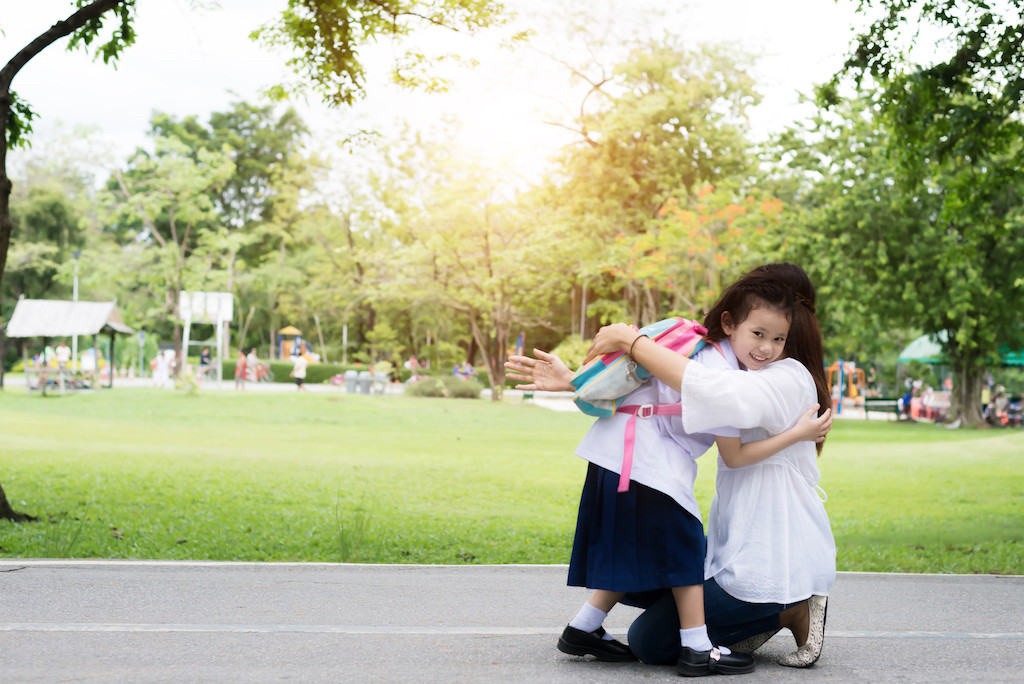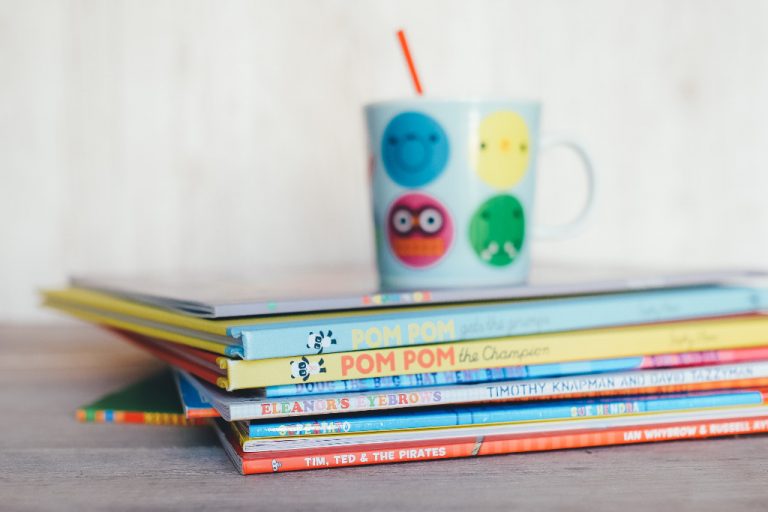SingaporeMotherhood | Parenting
March 2015
8 Useful Lessons (for Parents) with Primary 1 Kids

It’s not just our little ones that are starting Primary 1. It’s a steep learning curve for parents too! Here’s a useful guide with eight lessons to get you off to a good start
Gosh, time seems to have flown. It’s the end of the first school term and the whole family seems to have survived relatively well. Here are some lessons which I have learnt since my daughter started Primary 1 this year.
[banner][/banner]
Lesson 1: Communication is Vital
You can’t help your child if you don’t know what’s wrong. You can’t steer her in the right direction either. So talk to your child. Try not to nag. Just talk to your child about anything. Have a conversation. Remind yourself that it’s all right to just chat about no topic in particular.
I use the journey back from school to chat with my daughter B. Sometimes I learn things − like there is a special needs child in her class. And we talk about how compassion and understanding are needed. It helps that she has been exposed to children with special needs as there was a Down Syndrome boy in her kindergarten and she has a cousin who is autistic. Sometimes she will ask, “Why are they like that?” One of the answers I give is that their brains have developed differently and thus what may be simple to you may be difficult for them.
(See also: Improve your Child’s Academic Grades with the Right Tutor. Here’s How to Find One)
Lesson 2: To Pack or Not To Pack
We started off with $2 of pocket money a day. I hung around for two recesses during the first week and saw how long the queues were, so from week two, we packed food for her to eat during recess.
She stays back after school three days a week. We struck a deal: on Thursdays and Fridays, she buys her own lunch. The rest of the week, she gets packed food. I didn’t want her to feel left out of the whole ‘buying your own food’ experience and I remembered how uncool it was to be the kid with packed food during my time − although it seems to be the opposite now with all the fancy lunchboxes and thermos bottles!
So her pocket money is now reduced to 60 cents for the days that she gets packed food, just in case she wants to buy a snack, and $1.50 for the days when she buys her own lunch. She is pretty frugal and almost every day, she will save at least 50 to 60 cents.

Lesson 3: No Money Lending in School
I was shocked when B told me that a Primary 2 girl had borrowed 90 cents from her. The girl eventually paid her back in instalments of 60 cents and then 30 cents.
When B told me about this, I had to think carefully about what to tell her. It was good that she was being helpful but the situation didn’t seem right. The more questions I asked, the more uncomfortable she became. When Daddy was told about it, she burst into tears.
My next step was to ask what the school’s standard of operation was for kids who had forgotten to bring their pocket money. I found out that there are kids who “borrow” so that they don’t have to use their own money for that day. Those who have genuinely forgotten to bring their allowance are to get help from the general office.
So, for the next round of talks, I told B that as a rule, I don’t lend money. Then I told her that if you lend someone money you have to be prepared not to have it returned to you. After that, I introduced the concept of extortion and how bullies would force money out of kids and not return the money. Therefore, I concluded, it was best to not lend, but to direct the girl to the school’s general office.
A month and a half later, I am glad I worked this through. I learnt that there were other incidences. One girl had her money removed from her wallet. The older girl said that she was borrowing 50 cents, but more was taken. Another child’s classmate whined to a girl to buy her food during recess. This went on for a week before the girl’s mother found out, and told the teacher. Apparently the girl who whined had packed food, but no pocket money.
To me, this is a form of bullying and children have to be taught how to deal with it, unpleasant as it may be. Bullies, like predators, can sense who the weaker ones are and since my child is not the aggressive sort, I feel that it is important to give her the tools to stand up for herself.
(See also: Help Your Child Cope with Bullying)
Lesson 4: School is Not the End of Childhood
This sounds like a oxymoron but for parents in Singapore, it is a tough one to handle. Our kids have frightening schedule − Chinese enrichment, maths, piano, violin, ballet, English, and art, in addition to regular schoolwork. I am already in the “slackers camp” when it comes to this − my daughter only has violin, ballet, swimming and Chinese enrichment.
Most of her friends have English and maths enrichment. B does not. I pray that her Montessori grounding in preschool and her genes will serve her well! (Daddy’s side is good in maths although I have yet to see evidence of any maths genius in B!) Her English is pretty good since she is a voracious reader. Feedback from her teachers has been good so far.
So on the days that we have a free evening, I resist the temptation of pulling out the workbook for a quick maths drill and say, “Scootering?” or “Playground?” because there has to be a balance of work and play.

Lesson 5: It’s All Right to Make Friends Slowly
Some mothers are worried that their children do not have friends, especially to hang out with during recess. I believe that children make friends at their own pace. Earlier in the term, I told B, “Take your time to know the girls and decide who you want to be good friends with. Remember what Ms C (her kindergarten principal) taught you. It is easy to be influenced by the people whom we mix with. Good children who mix with naughty children usually become naughty. Not the other way round.”
B does not have problems making friends, and neither is she bothered about eating alone during recess. I am glad that her Montessori-style preschool didn’t have a fixed break time − the children would eat at the snack corner whenever they felt like a snack. Sometimes it was a social gathering with two or more children, and sometimes they ate alone.
A good friend told me about her experience with her kids. R has four children of varying ages. She said, “Your child could eat alone and then join her friends at the playground, or she could eat alone the entire time, or she could eat quickly and then go to the library alone to hang out. It’s okay as along as she is happy with her decision. The only time it is not okay is if she is not happy with it, and only then will you have to step in.”
So when B told me that she ate alone, I didn’t say, “Oh, why don’t you eat with your friends?” or “You don’t have friends to eat with?” Now, she sometimes eats alone, sometimes with friends. After that they may go to the playground or to the library. Sometimes, she tells me, she waters the plants. I ask if that’s popular and she says no but that she enjoys it. That is commendable − to do something you enjoy and not care about whether it is popular.
Lesson 6: Get Connected with Other Mothers
B’s class has a mother’s WhatsApp group. This has been really helpful. Just type in your question and at least one other mother will know the answer. It’s a great example of using technology for support. During the first few weeks when everything was new, it certainly helped when mothers who had older kids knew the answer to questions you did not want to bombard the teacher with. Building community ties within the class mothers is also a good way to get involved with your child’s school life.

Lesson 7: Encourage Silent Reading
I think it’s great that B’s school encourages silent reading before assembly. I am glad I started her early on reading, from her baby days where we started with cloth books.
It also helps that the only entertainment we have for her are non-electronic − there are no tablets or iPads. Instead we have board games, there is the patio with plants and water toys, and of course, lots of books.
(See also: Improve Your Preschooler’s Reading Skills with These 9 Fun Activities That You Can Do at Home)
Lesson 8: Sleep Early
We suck at sleeping early. We are still trying our best and I think there has been slight improvement. We are now in the bedroom by 10 pm. It’s not great but we will continue to try because it’s important to get enough rest. I can see that starting the day at 6.45 am is really tiring for a six-year-old, so our next goal is to get to the bedroom by 9.30 pm. Wish us luck!
Dr Cecilia Leong has a PhD in Communications and teaches tertiary students life skills. She also conducts Emotional Intelligence workshops. Her book, Perfect Match Health Education for Primary 4, 5, and 6 is being used by many primary schools in Singapore. You can read more parenting tips at Cecilia’s blog.
All content from this article, including images, cannot be reproduced without credits or written permission from SingaporeMotherhood.
Follow us on Facebook, Instagram, and Telegram for the latest article and promotion updates.





